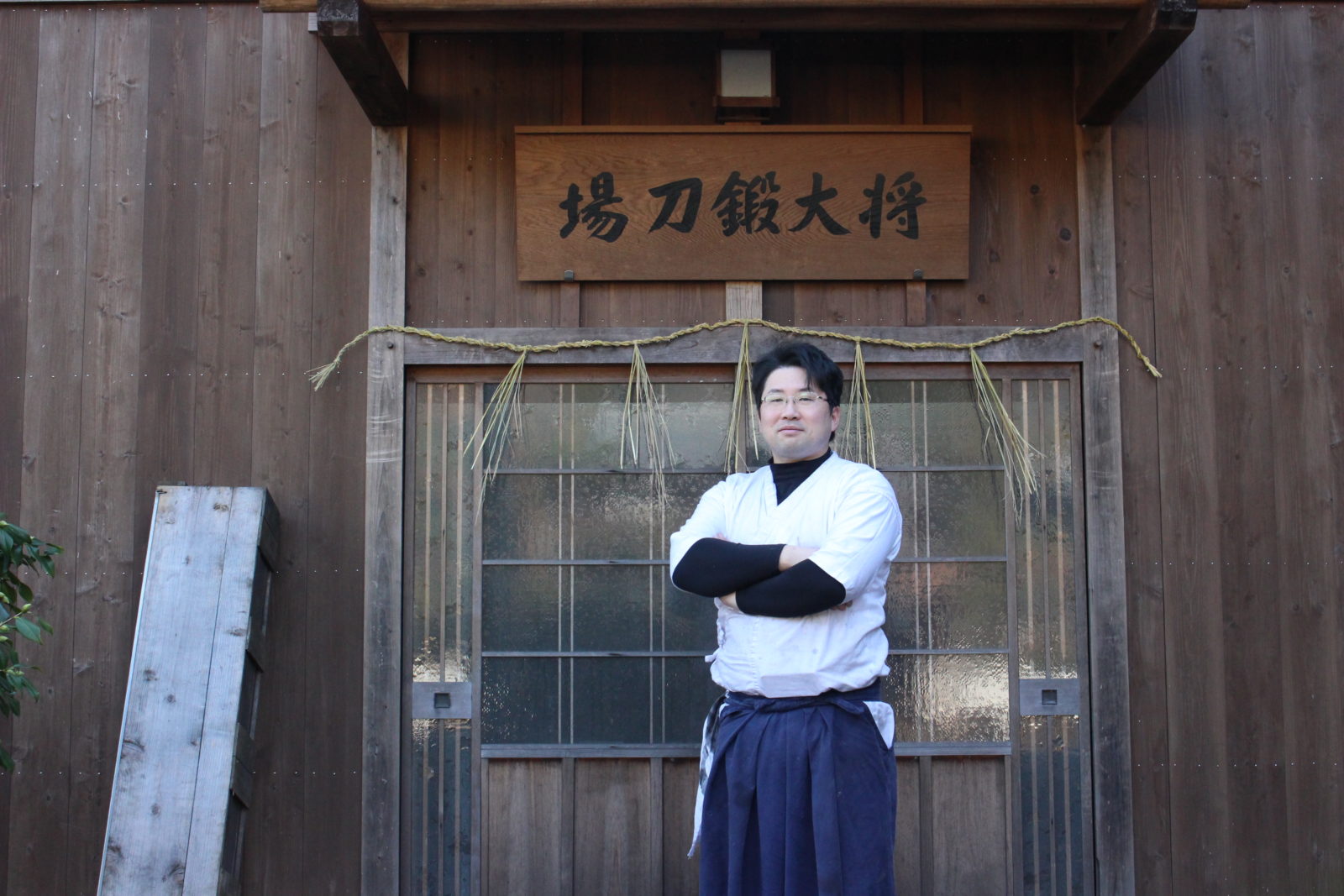Finding His Calling
Nakanishi opened his shop, Masahiro Tanto-jo, in 2014. He focuses mainly on producing katana and offering workshops where people can try making small blades of their own.
How did he find himself on this path?
“When I was little, I saw some real katana at the Kyoto National Museum. It had a big impact on me. I thought they were so beautiful and cool…”
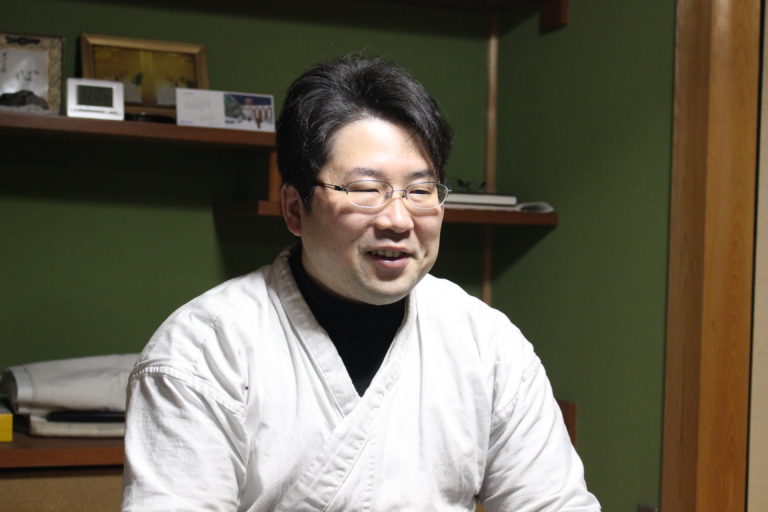
From the moment he saw these real-life swords, he began to feel the pull of the katana. When he started to think about his future in middle school, he thought, “I want to become a swordsmith!”
However, after graduating high school, he started working in a factory for one of the big automakers.
He did this to support himself as he looked for a master to learn from.
This was still a time when it was difficult to get information on the internet, so he said “looking for a master” meant searching through books on the katana for information about swordsmiths in Japan.
“I just happened to be looking through an illustrated book at an exhibition, when one swordsmith caught my eye. Looking back on it, I can’t say exactly what made me notice him, but at the time, I thought with total conviction, ‘I’m going to become his apprentice!’ So, I wrote him a letter.”
To demonstrate his sincerity, he wrote his letter in a traditional style with a brush and ink. A month later, he says he got a reply that simply said, “Sure.”
That’s how, at age 20, Nakanishi began his apprenticeship under a master swordsmith in Fukushima Prefecture.
7 Years of Training
I asked Nakanishi what his apprenticeship was like.
“Actually, the first year or two was mostly looking after dogs and doing carpentry-type stuff. My teacher had 7 dogs. They had to be walked twice a day. It was a big hassle, so I took all seven out at once.” (laughs)
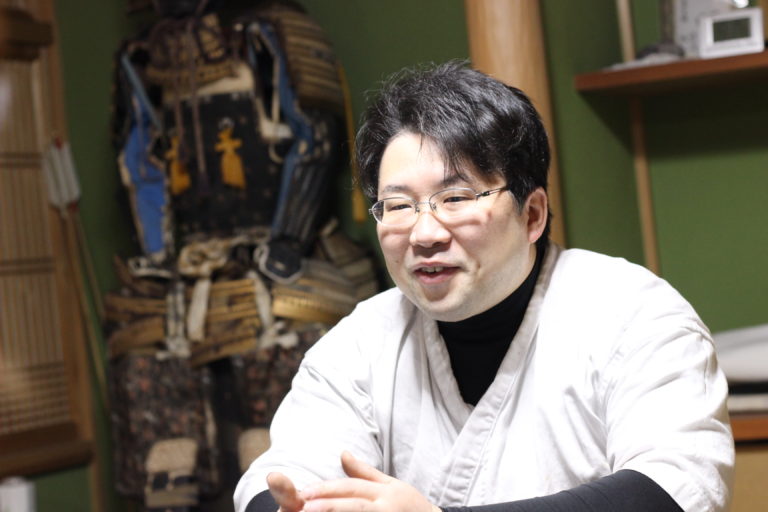
Although Nakanishi didn’t do any sword making for a while, he said tending to things around his teacher’s home actually wasn’t that bad. He made dog houses, decorative water basins for the garden, etc.
Starting in the second year, he began learning about the katana a little at a time while continuing to tend to the other things around the house.
“My teacher wasn’t the type to go into a lot of detail, so I learned mainly by observing him at work. When I couldn’t make something correctly, I would think it over in my head all day as I fed the dogs and did my other duties. ‘Where did I go wrong?’”
Nakanishi wasn’t taught in a detailed, systematic way. However, he said that this taught him how important thinking things through on your own first is to the learning process.
“Since you work with coal and fire as a swordsmith, your sense is very important. If you only do exactly what you are told, and lose your ability to think on your own, you won’t be able to practice honing that sense.”
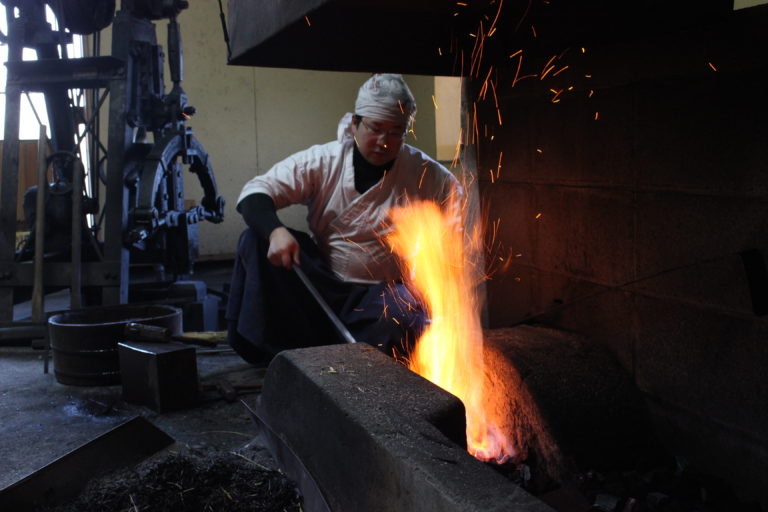
Life as a Swordsmith
Wasn’t your apprenticeship a difficult experience?
“Actually, it was much harder to go out on my own. Because now I was responsible for everything: getting all the tools and equipment I needed, as well as handling the business end of things.”
Nakanishi says that, in reality, making a living as a swordsmith is very difficult. Even after getting a license to become a sword maker, people are often unable to make it work economically and end up quitting.
Nakanishi says, however, that he has never thought about giving up.
“I didn’t really think that deeply about the future, I guess. Every day I just looked at the progress I was making, and it was so fun. I was so into it that I didn’t have time to think.”
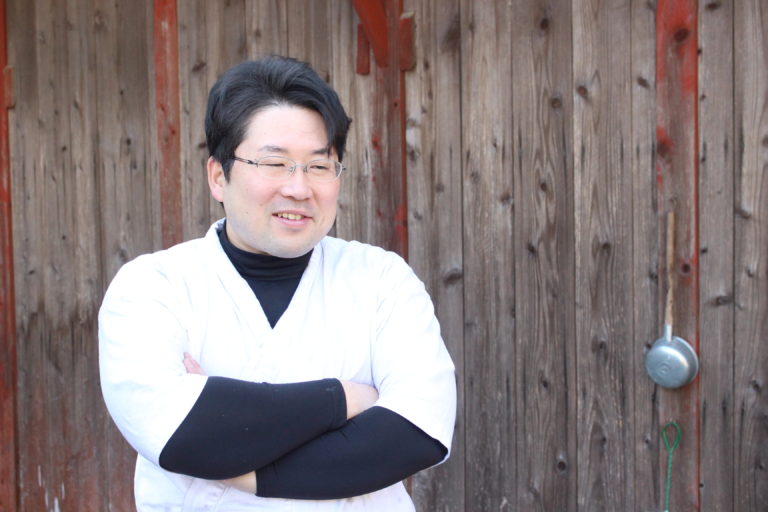
3 Aspects of the Katana Visible in its Cutting Edge
What do you think is so good about katana?
“There are three ways to talk about the katana: the katana as a weapon, the katana as art, and the katana as an item of psychological support.”
These three aspects are embodied in the hamon, or the trademark temper pattern on the blade of the Japanese sword.
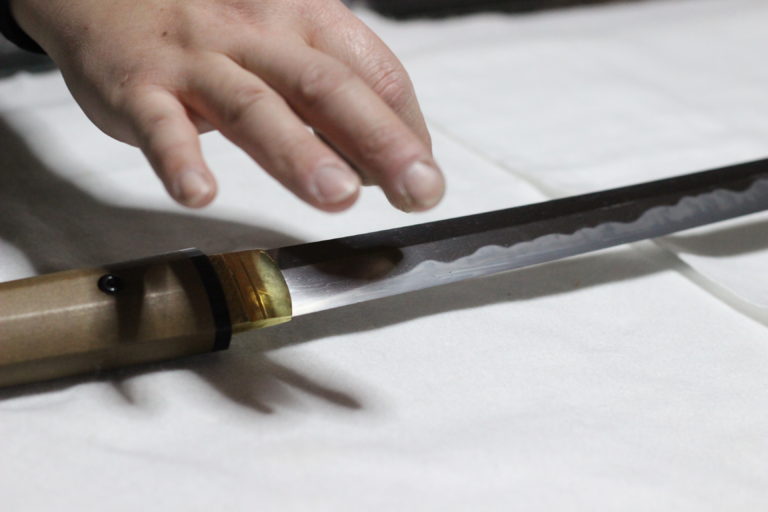
“As a weapon, the katana is sharper the harder it gets. However, the harder it gets, the easier it might break. The moment a samurai’s sword broke, they lost the ability to fight, and could be killed.”
For that reason, swordsmiths carry out the tempering process on the cutting edge of the sword. The difference in the cutting edge’s hardness from the rest of the sword is what produces the hamon on the blade.”
People are often fascinated by the shining hamon, but behind that beauty is concealed the function of cutting.
“The Japanese sword is the perfect confluence of beauty and function. This is what makes the Japanese sword popular even as art to this day.”
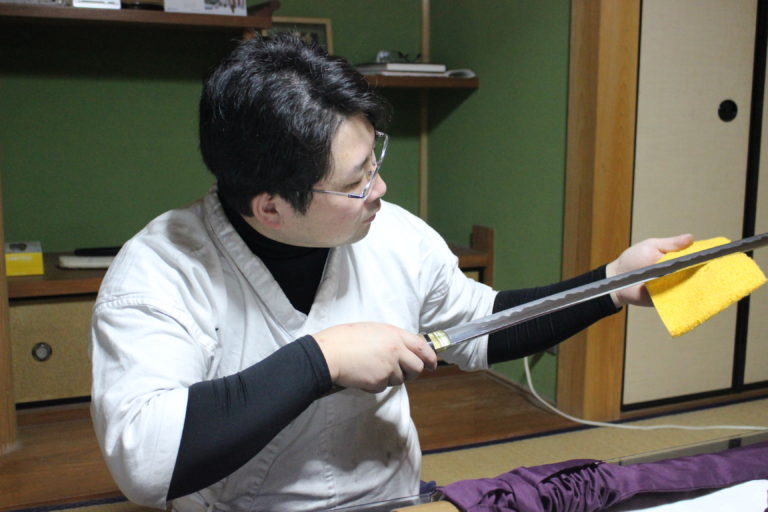
“The reason the Japanese have always finely sharpened their swords was not just because it looked good. They believed that gods dwelled within them.”
This was a time when medical knowledge was basically non-existent. From its gleaming blade and its strength as a weapon, the katana came to be infused with religious significance. It is for this reason that it came to be viewed also as an emotional support that helped people feel safe.
Steel was precious back then, so it shouldn’t be hard for modern people to understand why people of the day felt something akin to religious awe when they beheld rare, shining steel.
Japanese Culture & a Knife-making Experience
While people can learn about cultures around the world thanks to the spread of social networking platforms, etc., Nakanishi worries that many Japanese people view the katana – once a symbol of Japanese culture – as being no longer necessary.
“Now there is so much information out there, you can almost lose sight of yourself.
When Japanese people think about what it means to be Japanese, and look back on their history, they will inevitably come face-to-face with the Japanese sword. And when they do, they will recall the philosophy our ancestors had toward the things they made.”
When Japanese people think about what it means to be Japanese, and look back on their history, they will inevitably come face-to-face with the Japanese sword. And when they do, they will recall the philosophy our ancestors had toward the things they made.”
How would you like to experience one of the most important roots of Japanese culture? At Masahiro Tanto-jo, you can do just that.
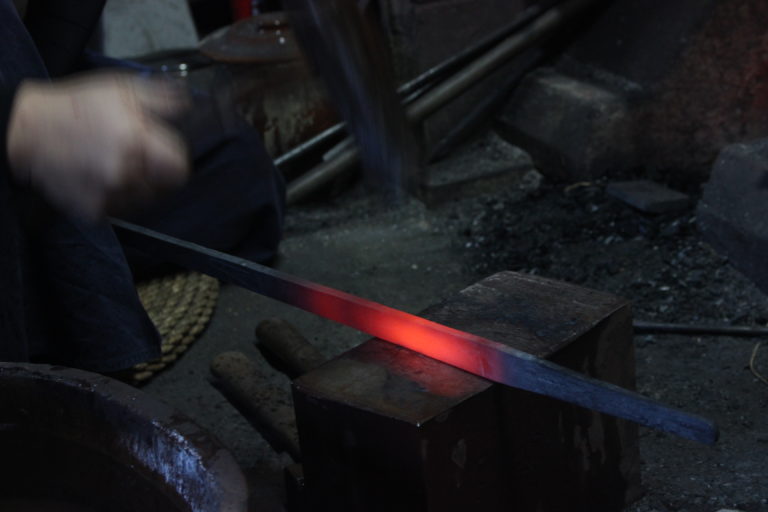
To introduce the allures of the katana to the public, Masahiro Tanto-jo offers a hands-on knife making experience.
It is a fantastic way to experience Japanese culture. You can make a blade about 15cm long in 3-4 hours.
-
1. Forging: heat up the steel and shape it with a hammer. You determine the blade’s length and the type of point at this stage.
-
2. Annealing: put the heated steel in ashes for about five minutes and allow it to cool. By putting the steel in ashes, it doesn’t come into contact with the air. This allows it to cool slowly and reduces the stress on the steel.
-
3. Tsuchi-tori: rub the steel’s surface with clay. Applying the clay to the non-cutting edge ensures that only the cutting edge will harden during step 4.
-
4. Quenting: re-heat the steel in the forge and, at the appropriate time, put the blade directly into water to cool it rapidly. Doing this causes the steel to harden. The part that was rubbed with clay cools more slowly, preventing it from becoming too hard.
-
5. Sharpening and engraving: Finally, Nakanishi sharpens the blade for you, and engraves any letters you’d like on the blade. And with that, you’re finished!
This is an experience you won’t find just anywhere, so why not take advantage of this precious opportunity?
Mr. Nakanishi loves to talk, so you can count on him to provide plenty of stimulating conversation!

